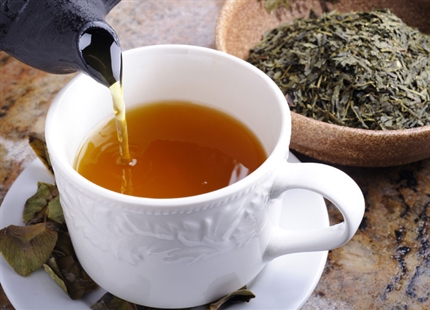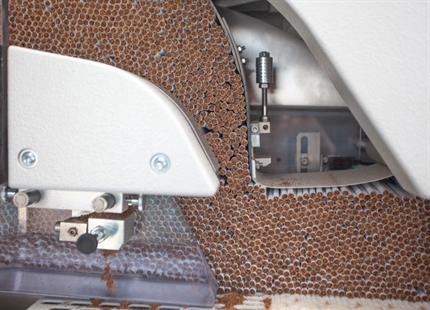
Contact us today to learn more about humidity for Allergies...

Why Humidify... For Allergies
Pollen, mites and pet allergy sufferers can breathe a sigh of relief — air humidity helps them all!
House dust is the biggest trigger of allergies worldwide. Anyone who is allergic to house dust reacts to either mite constituents or animal allergens with complaints such as sneezing, eye irritations or asthma. Together with pollen allergy sufferers, these people experience symptoms when exposed to airborne, allergy-triggering substances, known as allergens.
Pollen allergy sufferers know what alleviates their complaints: rain, humid air and the absence of wind. House dust allergy sufferers experience significantly pronounced complaints during the dry hot period. The experts say to them: Be careful with humidity — 30 or 40 percent is better than 50 percent! Is that right?
It is logical that only the proportion of house dust that is present in the air can be responsible for complaints and illness. This proportion is difficult to measure. One year ago a study was published for the first time, in which the quantity of mite allergens effectively breathed in by 10 individuals during normal activities was measured over 24 hours [1]. The study shows that the quantity breathed in primarily depends on those personal activities that lead to dust turbulence. When the activity is low (sleeping), a minimum of mite allergens is breathed in. Among people who are engaged in physical movement and activity, the concentration in the air they breathe in rises by over a thousand times!
The procedure of dust turbulence is a key aspect for the impact and thus the complaints and clinical pictures. A few weeks ago, a study was published which showed that the turbulence of mite constituents from a linoleum floor continually decreases by about one hundred times if the air humidity is increased from 10% to 40% and 80% [2]. This corresponds to our day-to-day experience and explains why dryness exacerbates allergy complaints.
Leaflets recommend that allergy sufferers keep air humidity in their apartments below an upper limit of 50 percent. Some recommendations specify a lower limit of between 35 and 40 percent. It is not mentioned that, for three quarters of the year, this upper limit is exceeded in our houses. Nor is it mentioned that in the vast majority of buildings (old, but especially new buildings) the lower limit is significantly undercut during the winter months. Monthly average values of 20 percent have become normal [3]. Since this pronounced dryness facilitates house dust turbulence, it leads to an increase of allergic complaints in wintertime [2, 4].
The air humidity plays a major role in the extent of dust turbulence. Experiments show that the adhesion of “moistened” dust to smooth floor surfaces increases dramatically above 30 to 40 percent. In this area, the weight of the dust particles also increases drastically due to water condensation. They stick together, form clusters, and quickly fall to the floor again (see pictures). Apart from that, the risks of mold problems increase above 60% humidity. The optimal humidity range for minimizing allergy complaints is therefore between 40 and 60 percent. Allergy sufferers should monitor the air humidity in winter using a hygrometer. To find out how to uphold the upper limit and humidify the air in a hygienic manner, see the box titled “Air humidity”.
Precisely measuring the proportion of allergens that reach our airways via the ambient air is complicated and expensive [1]. The only measuring instrument which is permanently available for real-time measurement of the impact are the mucous membranes in the nose, airways and eyes. Trust these sensations, take responsibility for yourself and decide what does and does not help you!
- In the wintertime, if the hygrometer repeatedly shows values below 40%, be brave enough to humidify. You will be amazed at the noticeable relief this brings! The house dust turbulence will be lessened and at the same time air humidity helps your nose to filter air and your bronchial tubes to clean the air passages.
- Breathe through your nose and take care of your nose! The nose is both a filter system for house dust and an air humidifier for the lower airways. Over half of the house dust breathed in through the nose is deposited on the moist mucous membrane. If the nose is not dried out, the dust can be expelled by blowing the nose, or by swallowing or coughing. If you cannot blow your nose once or twice a day, it is probably too dry and needs to be moistened. Mouth-breathing allows far more dust to reach our lungs.
- House dust which reaches the lower airways can be removed again through the self-cleaning system of the bronchial tubes. The disposal process through coughing and swallowing revolves around a carpet of mucous which moves itself against the larynx. People who mouth-breathe and suffer from allergies are particularly susceptible to drying out of the mucous membrane and doubly benefit from humidification [5].
- The importance and effectiveness of the moist cleaning of surfaces cannot be overemphasized. For your floors and furniture, choose smooth surfaces that are easy to clean using moisture. Cleaning also includes the regular changing and washing of bed linen!
- We all totally underestimate the factor of dust turbulence, since it is completely invisible! Vigorous, sudden movements, the opening and closing of doors, changing your clothes and, above all, cleaning tasks (vacuuming, making beds) trigger the release of invisible clouds of dust, but these can only be partially avoided. Therefore, cleaning tasks should be delegated or carried out shortly before leaving the room or the apartment. Use vacuum cleaners with highly-effective HEPA filters!
- The best real-time measuring instrument for allergens in the air is how your eyes, nose and bronchial tubes react. Trust them, they show what works!
[1] Tovey ER et al, Time-Based Measurement of Personal Mite Allergen Bioaerosol Exposure over 24 Hour Periods, PLoS ONE, 2016
[2] Salimifarad P et al, Resuspension of biological particles from indoor surfaces: Effects of humidity and air swirl, Science of the Total Environment 583 (2017) 241–247
[3] Quinn A, Shaman J, Indoor temperature and humidity in New York City apartments during winter, Science of the Total Environment 583 (2017) 29–35
[4] Tian Y et al, A comparative study of walking-induced dust resuspension using a consistent test mechanism, Indoor Air 2014
[5] Naclerio RM, Observations on the ability of the nose to warm and humidify inspired air, Rhinology, 45, 2007
Benefits of humidification for Allergies and Dust include:
- Reduce allergic reactions.
- Reduces risk of mold problems in households
- Minimizes the risk of disease
- Improves working environment for people


Why Humidify... For Tea Production

Tobacco production humidification

Why Humidify... For Clean Rooms

Why Humidify For... Government Buildings

Spray booth humidification

Are you an Engineer working on a project that needs humidification?

Dehumidifiers for military storage

Why Humidify... For Crop Storage

Why Humidify... For Hospitals and Care Facilities

